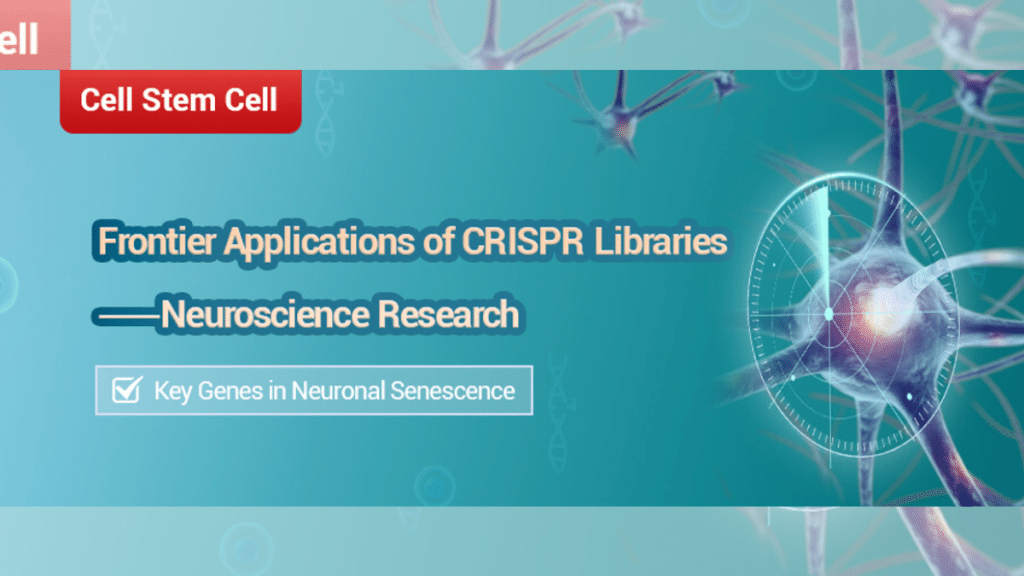Neurodegenerative diseases such as Alzheimer’s disease (AD) and Parkinson’s disease (PD) pose significant challenges to global health, particularly as the aging population increases. Aging remains the most substantial risk factor for these conditions, underscoring the urgent need for innovative research approaches to unravel the underlying mechanisms of neuronal senescence and identify potential therapeutic targets. Recent advancements in gene-editing technologies, particularly CRISPR-Cas9, have revolutionized neuroscience research by enabling precise genetic modifications. Genome-wide CRISPR screening has emerged as a powerful tool to systematically investigate gene functions, offering unprecedented insights into the molecular pathways involved in neuronal aging and neurodegeneration.
Establishing Disease Models with Human Pluripotent Stem Cells
A critical step in studying neurodegenerative diseases involves developing accurate and reliable in vitro models that closely mimic the human disease state. Human pluripotent stem cells (hPSCs) have been instrumental in this endeavor, providing a versatile platform for generating various neuronal subtypes. By introducing specific genetic modifications, researchers can create models that replicate key aspects of AD and PD. For instance, knocking in inducible Cas9 (iCas9) at the AAVS1 safe harbor locus allows for controlled gene editing, facilitating the study of gene functions in neuronal cells. Additionally, introducing mutations such as APPswe/swe for AD or LRRK2G2019S/G2019S for PD into hPSCs enables the generation of neurons that exhibit disease-relevant phenotypes, providing a robust platform for investigating disease mechanisms and potential interventions.
Implementing Genome-Wide CRISPR Screening
With disease models in place, genome-wide CRISPR screening can be employed to identify genes that regulate neuronal senescence and contribute to neurodegenerative processes. Utilizing comprehensive libraries like the Brunello CRISPR knockout library, which targets over 19,000 genes with multiple guide RNAs per gene, researchers can perform high-throughput screens in induced cortical neurons. In the context of AD, neuronal death serves as a quantifiable metric to assess the impact of gene knockouts. Through this approach, genes can be categorized based on their roles in neuronal survival and disease specificity, laying the groundwork for further functional analyses.
Validating the Neddylation Pathway as a Key Regulator
Among the pathways identified through CRISPR screening, the neddylation pathway has garnered significant attention for its role in neuronal health. Neddylation involves the conjugation of the ubiquitin-like protein NEDD8 to target proteins, primarily cullin-RING ligases, thereby regulating their activity. Secondary validation of screening hits, such as UBA3—the E1 activating enzyme in the neddylation cascade—has demonstrated its downregulation in aging brains. Loss of UBA3 function in APPswe/swe neurons leads to reduced cell survival, independent of amyloid precursor protein (APP) processing, highlighting neddylation as a critical regulator of neuronal viability.
Consequences of Neddylation Inhibition on Neuronal Integrity
Inhibiting neddylation, either through genetic approaches like UBA3 knockout or pharmacologically with inhibitors such as MLN4924, has been shown to induce markers of cellular senescence in neurons. These markers include increased nuclear area, accumulation of the cyclin-dependent kinase inhibitor p21, and DNA damage. Such findings suggest that neddylation plays a vital role in maintaining neuronal function, and its disruption may accelerate the progression of neurodegenerative diseases.
Neddylation’s Influence on Tau Pathology in Alzheimer’s Disease
Further investigations have revealed that neddylation inhibition exacerbates tau pathology in AD models. Specifically, reduced neddylation in APPswe/swe neurons leads to increased tau phosphorylation at serine 235 and promotes tau aggregation, resulting in elevated levels of insoluble tau. These observations provide new insights into the molecular mechanisms underlying tau-related neurodegeneration and suggest that modulating neddylation could be a potential therapeutic strategy for AD.
Extending Findings to Parkinson’s Disease Models
The implications of neddylation in neuronal health extend beyond AD. In PD models, particularly in dopaminergic neurons harboring LRRK2G2019S/G2019S mutations, neddylation inhibition similarly results in decreased cell viability. This finding indicates a shared mechanism across different neurodegenerative diseases, positioning the neddylation pathway as a potential universal target for therapeutic interventions.
Therapeutic Implications and Future Directions
Identifying neddylation as a regulator of neuronal senescence opens new avenues for developing treatments for AD and PD. Targeting the neddylation pathway could offer novel strategies to delay or prevent neurodegeneration. Moreover, the use of precise in vitro models, combined with CRISPR screening, accelerates the discovery of disease mechanisms and the development of targeted therapies. Services like Ubigene’s CRISPR screening, which offers comprehensive solutions starting at $8,000 with an eight-week turnaround, provide valuable resources for researchers aiming to explore these pathways further.
Conclusion
The integration of genome-wide CRISPR screening with advanced neuronal models has significantly enhanced our understanding of the molecular underpinnings of neurodegenerative diseases. The elucidation of the neddylation pathway’s role in neuronal aging and pathology underscores the potential of this approach to uncover novel therapeutic targets. As of March 25, 2025, these insights pave the way for innovative strategies aimed at combating the growing burden of neurodegenerative disorders.
